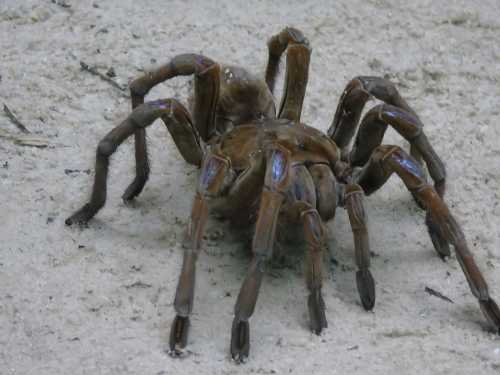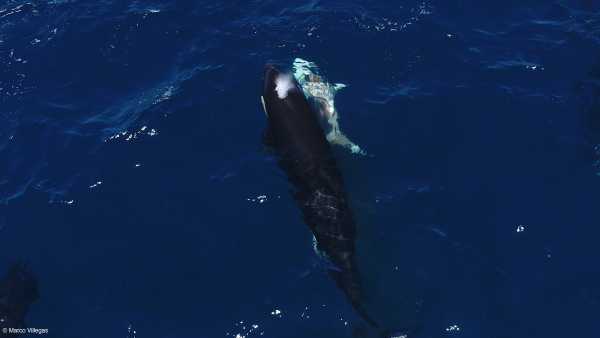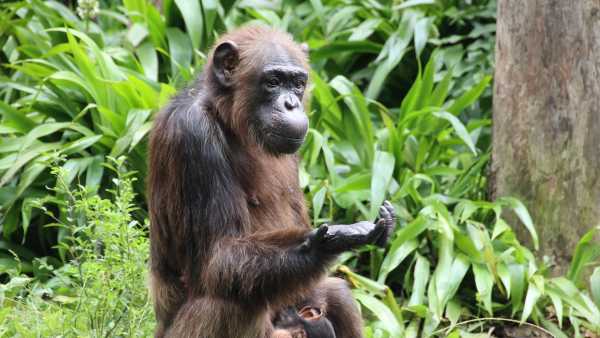
The Goliath tarantula is a name that sounds like something out of a horror movie. But is it really worth fearing? Here's what I've learned about this impressive creature and why its reputation is greatly exaggerated.
Who is he and what makes him unique?
Goliath is not just a big spider, it is a record holder on our planet. It belongs to the so-called theraphosic tarantulas, and adults can “spread their legs” almost 30 centimeters!
They weigh as much as a small bun, about 150 grams (you won't find such a figure among spiders anymore).
Among its relatives there are other similar giants – “Theraphosa stirmi” and “Theraphosa apophysis”, but it is “Blondie”, as scientists say, that is still the largest “weightlifter”.
Where does it live and how does it behave?
You can't find the goliath everywhere: its native habitat is the tropical and very humid jungles of South America, especially the forested areas of Guyana, Suriname, northern Brazil and Venezuela. These spiders love shade and soft, damp soil, where they can slowly dig a deep hole for themselves. During the day, they don't like to go out “into the world”, but at night they are the most real hunters.
How does it hunt and what does it eat?
Despite its scary name “bird eater”, birds are a very rare item on the goliath's menu. Most often, it hunts for hefty insects, worms, small frogs, lizards, and sometimes small rodents.
The spider chooses ambush tactics: it waits patiently at the entrance to its burrow and attacks instantly when it senses the vibrations of its potential “dinner.” It bites with its chelicerae (a kind of jaw), injecting a poison that paralyzes and dissolves tissue.
After that, the spider simply “eats” the liquid mass, because it cannot chew solid food due to the structure of its mouth.
Is it dangerous for people?
For humans, a goliath bite usually resembles a large bee sting: it hurts, there may be swelling, and sometimes an allergic reaction. No fatal cases have been recorded by science. And rumors about “lethal drops” of poison that can kill a horse are just fantasies.
How does one defend themselves from enemies?
Goliath is not a Hollywood action hero and never attacks people first, he would rather run away than fight. If he fails to escape, he takes a “fighting” pose and can even “hiss”. This sound is caused by the friction of his limbs. And his main defense is small hairs on his abdomen with microscopic hooks.
When a spider is threatened, it shakes small hairs from its abdomen towards its enemy with a sharp movement of its hind legs. These hairs easily cling to the skin or mucous membranes of the attacker. For the enemy, this is felt as irritation, burning or even itching, and in humans it can cause an allergic reaction.
How does it live and reproduce?
There are many interesting things in the life of goliaths. Males grow quickly and do not enjoy adulthood for long. After mating, they live no longer than a few months. Females can live up to 25 years!
Mating is a ritual for them: the male weaves a web “mat” where he deposits a drop of sperm, then seeks out a female and “notifies” her of his intentions with vibrations of his paws. After a successful encounter, the female lays up to 200 eggs in a cocoon and guards them.
Amazing facts
Goliath is capable of starving for months; in laboratories, there have been cases where adults survived without food for 6-12 months.
Young spiders can even regrow a lost leg during molting.
Bird-eater in culture and in the kitchen
Some indigenous people of the Amazon have long eaten spiders! They remove their hairs and then roast them over a fire or cook them in banana leaves. A dish for the brave, but for those people it is culture and tradition.
What place did the Goliath tarantula occupy in nature?
Goliaths are an important part of the forest ecosystem. They regulate the abundance of insects, amphibians and rodents. But their existence is now under pressure from deforestation and illegal harvesting for collectors.
As you can see, the demonic image of the giant spider is very far from reality.





